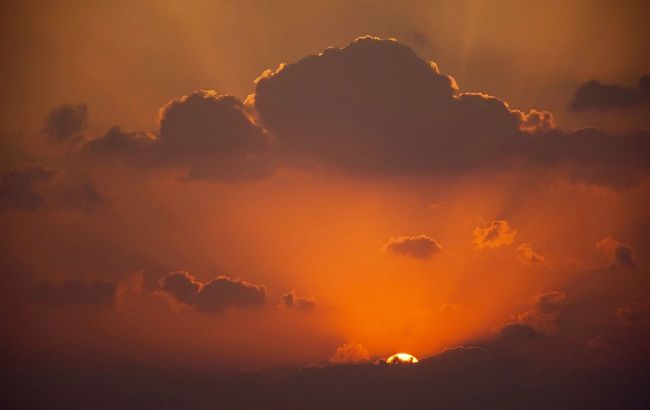Powerful geomagnetic storms hit Earth: Who and where can see polar lights

In May 2024, a powerful geomagnetic storm allowed people in many parts of the Earth to witness exceptionally bright auroras. Currently, solar activity has intensified again, leading to a series of geomagnetic storms.
RBC-Ukraine reports on what is known about the current geomagnetic storm and whether it will allow for a view of the Northern Lights this time.
What is known about the current geomagnetic storm
Ukrainian meteorologist and weather forecaster Natalka Didenko first reported the approach of strong geomagnetic storms on July 29.
"Honestly, I rarely see such forecasts with such serious geoactivity. So, don’t forget to keep something for blood pressure and headaches if you have previously noticed negative effects of geomagnetic storms on your health," she emphasized.
This information was confirmed by the NOAA Space Weather Prediction Center.
According to scientists, the geomagnetic storm is expected to last until Thursday, August 1.
Our latest modeling - as shown in this animation - indicates Earth's outer atmosphere may begin to feel impacts from the recent coronal mass ejections around 06-12 UTC July 30. A G3 Watch Remains in effect for Tuesday with G2 conditions possible through August 1. #SpaceWeather pic.twitter.com/S5z9iJlqGr
— NOAA Space Weather Prediction Center (@NWSSWPC) July 30, 2024
Researchers have clarified that the increasing frequency and intensity of geomagnetic storms are due to solar flares, as the Sun approaches the peak of its 11-year activity cycle. During this period, more "spots"—colder regions with particularly intense magnetic fields—appear on the Sun’s surface.
These extreme magnetic regions can trigger various "effects," such as solar flares or coronal mass ejections (CMEs)—large waves of plasma (electrically charged particles) ejected into interplanetary space at high speeds.
Interestingly, in recent days, there has been a series of powerful X-class solar flares, accompanied by several plasma and magnetic field ejections (CMEs).
Connection between geomagnetic storms and the aurora
The aurora, or polar lights, is an optical phenomenon that occurs in the upper layers of the atmosphere and appears as glowing patches on the night sky.
It is caused by the interaction between Earth's magnetic field and cosmic (particularly solar) radiation that reaches the upper atmosphere. The areas of this interaction form rings around the planet's magnetic poles.
When charged particles from the solar wind (electrically charged atoms or ions) collide with atoms and particles in the atmosphere (oxygen, hydrogen, nitrogen, and helium), this process creates visible light due to the release of energy.
Meanwhile, the "encounter" of these ions with Earth's magnetosphere can trigger geomagnetic storms.
The aurora can take on various shapes and colors. Its color and brightness depend on the speed at which the charged particles "dive" into the atmosphere and which gas atoms they interact with.
Therefore, the current aurora is forming against the backdrop of coronal mass ejections that have reached our planet.
Who and where can see the aurora
In recent days, the aurora has already been observed by residents in some regions of Australia and the United States.
"This is an auspicious start to the multiple storm train we are expecting over the next few days," noted space weather physicist Tamitha Skov in a social media post on Twitter (X).
Amazing! #Aurora has dropped as far south as Wyoming, USA during this ongoing #solarstorm! This is an auspicious start to the mutliple storm train we are expecting over the next few days. Thanks for reporting! https://t.co/CSk8E4fFfU
— Dr. Tamitha Skov (@TamithaSkov) July 30, 2024
In general, according to researchers' forecasts, auroras could appear at mid-latitudes of the Earth, provided that the forecasted coronal mass ejections reach the atmosphere.
Data from the Space Weather Prediction Center suggest that residents at around 50° latitude could become "witnesses to the light show in the atmosphere."
At the 50th parallel north, the following regions are partially located: the USA, Canada, China, Kazakhstan, France, Belgium, Czechia, Germany, Poland, and Ukraine.
However, geophysicists warn that space weather is challenging to predict. Even geomagnetic storms of this level, despite expectations, sometimes may not occur.
Also, read about how to protect your health during geomagnetic storms.
Sources: Natalka Didenko’s Facebook page, NOAA Space Weather Prediction Center, SpaceWeather.com, IFLScience, Space.com, and Dr. Tamitha Skov’s social media page on Twitter (X).

